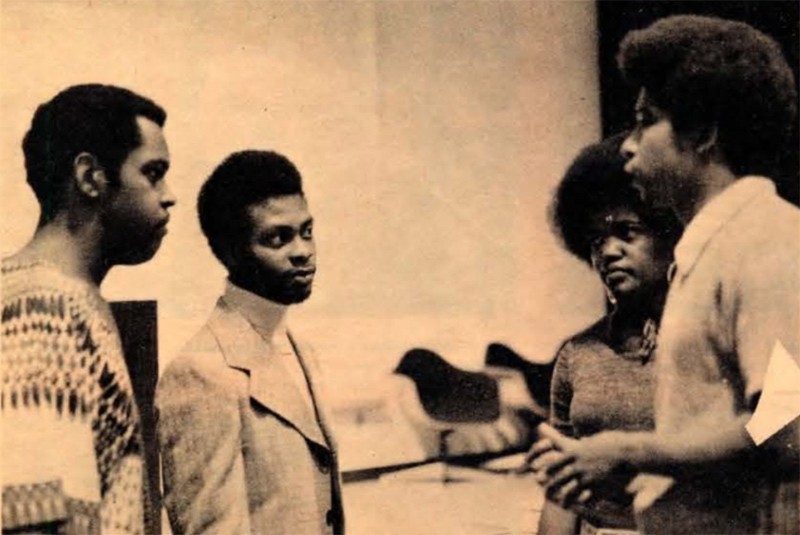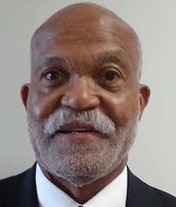"Dixie" Protests and Student Life through the Eyes of BAD Member
Introduction
Text-to-speech Audio
Images
Side Angle View

Front View



Backstory and Context
Text-to-speech Audio
The Greek Theatre is a 90-year old amphitheater founded in 1930 by the national Chi Omega Fraternity, which originated on the campus in 1895. This is the location of B.A.D's protest against "Dixie" in the year 1969. The Razorbacks' fight song at the time, "Dixie" was also the informal anthem of the Confederate States of America. There were many marches and protests over the song from the Black students who took offense to the playing of it. Anthony Eugene Hunt, a former law student and active BAD member, recalled that “We [BAD] knew that we were right, and the University was wrong, and tensions were very high.” Other students were outraged about the cancellation of "Dixie" playing because they believed it was their right to play and sing "Dixie." The playing of this offensive, out-of-place song displayed the campus’s insensitivity to the students on campus who were not white.
Beyond his memories of the "Dixie" protests, Hunt shared more with me about his experience as a Black student. As a student transitioning from a Historically Black University to the University of Arkansas, he instantly experienced differences as blatant as verbal racism and as silent as complete insensitivity. Black students were isolated and ostracized not only from the students on campus but also from faculty. A personal account of racism he experienced while on campus with a professor was receiving a grade he did not deserve. One day, Hunt approached a professor about a grade he made on his paper. He had received a “C” on it, and he believed it to be incorrect. He and his professor looked for his essay using Hunt’s student ID number and found that there was actually a “B” on the assignment he had written. According to Hunt, the professor responded: “I do not change grades.” Another memory he shared with me was from a creative writing course, in which the Black students in the course were asked to write about, “something vulgar, tell me what goes on in the Black neighborhood.” “I was really shocked with that kind of attitude, and the Black students were angry,” Hunt stated.
An instrumental member of B.A.D, Hunt attended monthly meetings and participated in many sit-ins. As a father, husband, student, and worker at a part-time job, Hunt still made time to participate and advocate for the rights of African Americans. One sit-in took place in Dr. David Mullins’s office, the chancellor at the time. B.A.D was advocating for the hiring of Black faculty and staff because of the lack of effort being put into the inclusion of a diverse staff. These students were trying to catch the University up with the times, to say the least.
The Greek Theatre proved to be a monumental site in more ways than one. Although not for its fundamental purpose, the protest that happened at this location proved to be crucial for the history and improvement of the University. It is the courage that was demonstrated across campus by B.A.D members like Hunt that made clear the campus's need for radical change.
Ahmad Pace, Jr is a current freshman NSF Path Scholar, completing his B.S. in May 2024 with a major in Mathematics with a concentration in Statistics with a minor in Legal Studies.
Sources
, U of A Journalism Staff. U of A and Chi Omegas Rededicate Greek Theatre, Celebrate Renovations, news.uark.edu. July 20th 2015. Accessed November 18th 2020. https://news.uark.edu/articles/27547/u-of-a-and-chi-omegas-rededicate-greek-theatre-celebrate-renovations#:~:text=The%20Greek%20Theatre%20has%20been,of%20Arkansas%20campus%20in%201895..
, University of Arkansas: University Libraries. BAD Times Collection, uark.edu. Accessed November 18th 2020. https://digitalcollections.uark.edu/digital/collection/BADTimes.
Robinson, II, Charles F.. Williams, Lonnie R.. Remembrances in Black: Personal Perspectives of the African American Experience at the University of Arkansas, 1940s-2000s. Fayetteville, Arkansas. Fayetteville: University of Arkansas Press, 2010, 2010.
Google Images
Google Images
